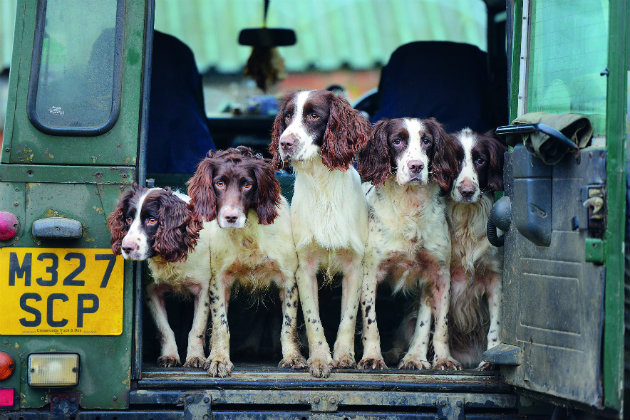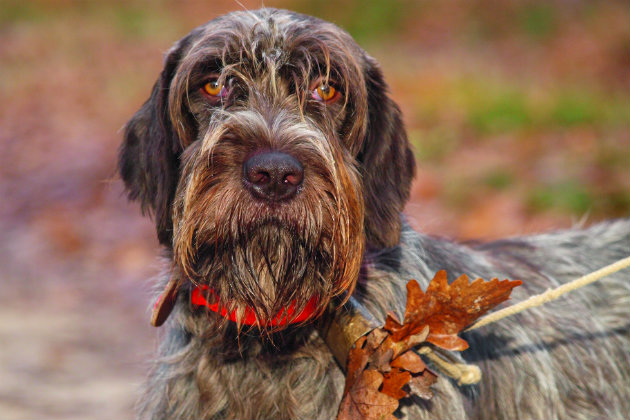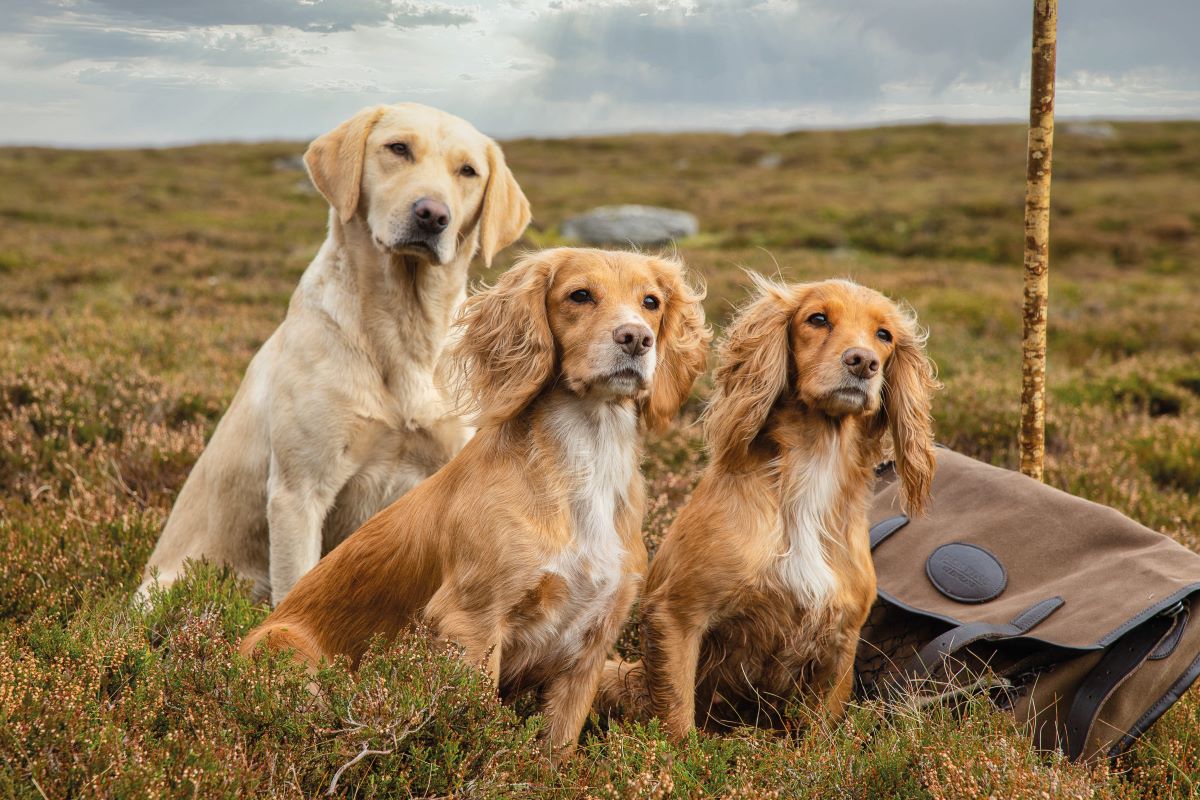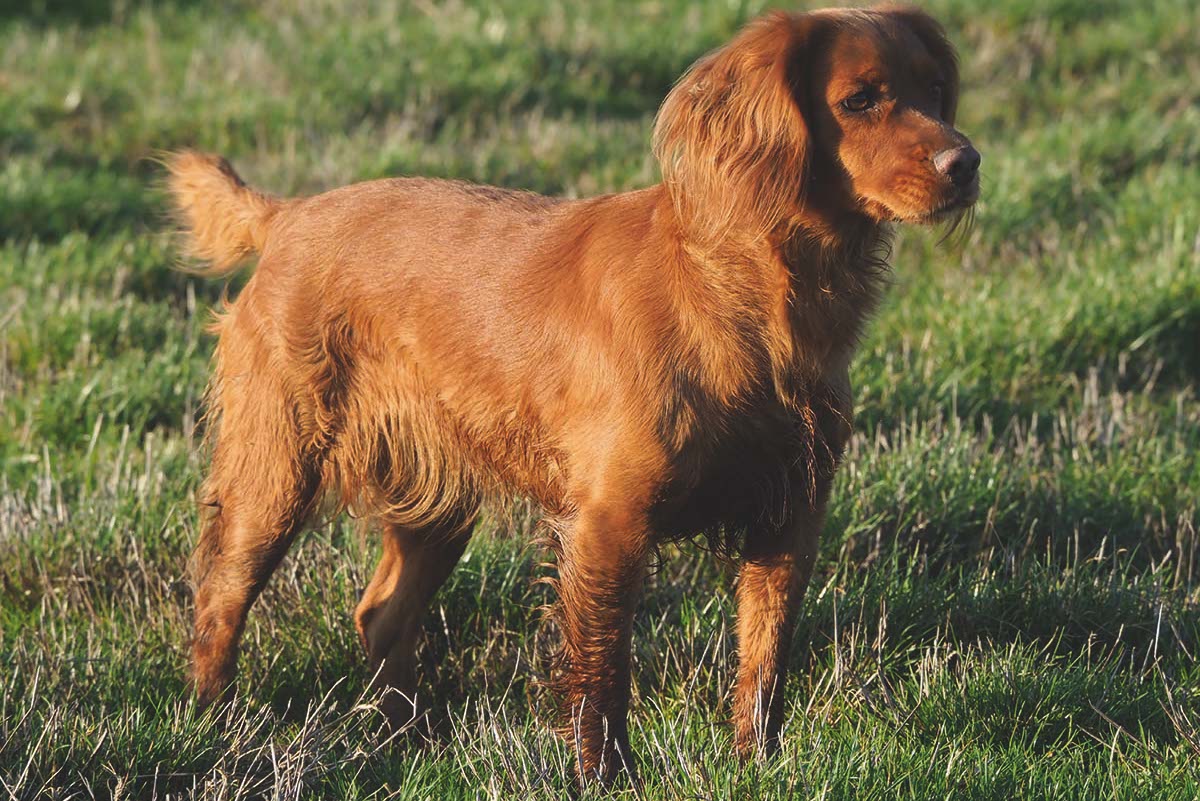The dream gundog team
What makes the perfect gundog picking-up combination? By Roderick Emery.

For work ethic, impudent charm, hunting ability and sheer ZING you can't top a spaniel
I’ll tell you what I want to see behind me when I am standing in a line of guns outside a likely looking covert. I want to see a bunch of pickers-up with sundry teams of likely looking dogs. I want them a good gunshot distance and where I can see them. I don’t want to see them lurking in bushes. I can’t see them lurking in bushes. That’s the point. I need to know where they are. I don’t need them in orange DayGlo jackets but I need to know where they are. For two reasons: firstly so that I don’t discombobulate anyone should the need to shoot behind me arise – this is acutely so when shooting partridges; secondly, so that I know who from the picking-up team is covering my peg. There should be a picker-up for every two guns, in my view, each with a selection of dogs to cover every eventuality. This, combined with the guns’ ability to pick dead birds within a stroll of their pegs and the guns’ dogs – such as they are – should ensure a brisk and efficient pick-up after each drive.
The essence of successful picking up
Which brings us neatly to the dogs. The essence of successful picking up is the retrieval of game shot by the guns and its delivery to the game larder in due season. Usually by way of the game cart. This is the objective. Picking-up is not a training exercise. A shoot day is an opportunity for a young dog to gain experience, to be sure, but it is not a rehearsal for trials or an advanced retrieving class. It is, first and only, a job of work.
And since the work is retrieving, one would expect to see some retrievers waiting about the place to exercise their particular skill. And the retriever of choice is, probably, the Labrador. There is a good deal of debate about the best colour of Labrador – black, yellow, chocolate or liver, fox red and silver. I have never seen silvers at work but I can vouch for the abilities of all the rest. Field and covert or moor and marsh, the old lab will see you right. There is a reason Labradors are now the commonest dogs out there – they get the job done.
They are not the only retrievers though by any means. Golden retrievers used to be very popular and very handy for that matter, but have fallen from favour for some reason. Probably because they are hairy, which makes sharing a house or car with a wet one an issue. Flat coats and curly coats will both work well enough given the chance, but it is rare to see either nowadays, except where there is an aficionado in the vicinity. Who probably has lots. The Chesapeake Bay is still popular in the USA but is a rarity here despite its endearing habit of routinely rescuing children from icy ponds, which you would think might make it more popular. But there we go.
And thinking of ponds, icy or otherwise, brings us to water dogs. Irish water spaniels, Portuguese water dogs and poodles are all wildfowling standbys and it is always a pleasure to see any of them in action. Since the Labrador is also, first and foremost, a water expert however – adept at retrieving crab pots off the Newfoundland coast, for example – they have crowded out these more esoteric breeds except among the truly discerning. Or eccentric.
Spaniels are worth their weight in game
And then there are the spaniels. You are as likely to see spaniels in front of the line – with the beaters – as behind with the pickers-up. But there are circumstances where a team of spaniels are worth their weight in game. Partridges in roots comes to mind. Downhill in the brambles behind you on some of those valley drives on the Welsh marches. In heather. In heavy cover where a lab might struggle, a spaniel will wriggle through and press on regardless. Springers, cockers, Clumbers, Sussex or any one of the dozens of sub-groups and breeds will do the trick. But for work ethic, impudent charm, hunting ability and sheer ZING you can’t top a spaniel. I am always reassured, as the guns and pickers-up begin to move off towards their vehicles and the next drive, to see an old boy decanting a handful of spaniels from his van for a last, fast sweep through. They seldom emerge empty handed.
And then there are what might be termed The Exotics. The HPRs. The GSPs, the GWPs, the vizslas, weimaraners and setters. The setters really are a rarity these days. You do bump into a handful on the more outlying grouse moors where you can still walk up a few brace over dogs in the old style; but even here you are more likely to see the German pointers and the vizslas. The latter are increasingly popular and if you meet one it is not difficult to see why. They have haught and charm in equal measure. They stare at you with their cold and indifferent hazel eyes until you tickle their ears whereupon they collapse in a heap with their paws in the air giggling like a tipsy princess. And while the quality of their retrieving may be unlikely to challenge the competition, their scenting ability is second to none. Interestingly I have seen a vizsla pointing to a couched woodcock, which most dogs would pass by and some retrievers will not pick for anything. So if woodcock are on the card it is an asset to have one of these bearded wonders in the vicinity.
Which breed where?
So that’s the talent pool. Now the burning question is who do you want where?
Well, on a traditional covert shoot I am going to want a bunch of labradors as the bedrock of my picking-up team, and I will have a decent smattering of spaniels to back them up in the sugar beet or in close cover where we are lined out along rides in the woods, for example. Either of these groups will suffice when we shoot with the lake at our backs but wouldn’t it be nice to see one or more of the water specialists at work?
I would like to see a couple of HPRs in the field. Partially for the look – I think they add a certain European je ne sais quoi and that may be increasingly useful these days. Several senior guns of my acquaintance have them so they can sit by their owners’ pegs looking exquisite during the drive and then do stylish, simple retrieving afterwards while the pickers-up get on with the tricky stuff in the distance.
And don’t – ever – forget a leash of mutts. A terrier or two, a dachshund perhaps? A Heinz 57? I’ve seen a pug lugging a partridge across the sward. The mutts keep us grounded. They add colour and charm. They are a laugh. And we shouldn’t any of us get too serious in the field. It’s all about having fun, after all.
Which gundog breed would suit all of my needs best?
A: First, find a gundog club by visiting The Kennel Club. This will have details of location, area of operation and what…
Popular gundog breeds – what’s on the rise?
Has the pedigree dog had its day? While it might be much too early to predict its eventual extinction, figures…
Bitch or dog – what makes the best gundog?
SEX, WHETHER WE like to admit it or not, dominates our lives in many ways, not least when we come…
Bill Meldrum: The Queen’s former headkeeper talks gundogs
Bill Meldrum may have lived down south for more than 50 years but he is a Scottish gamekeeper through and…












